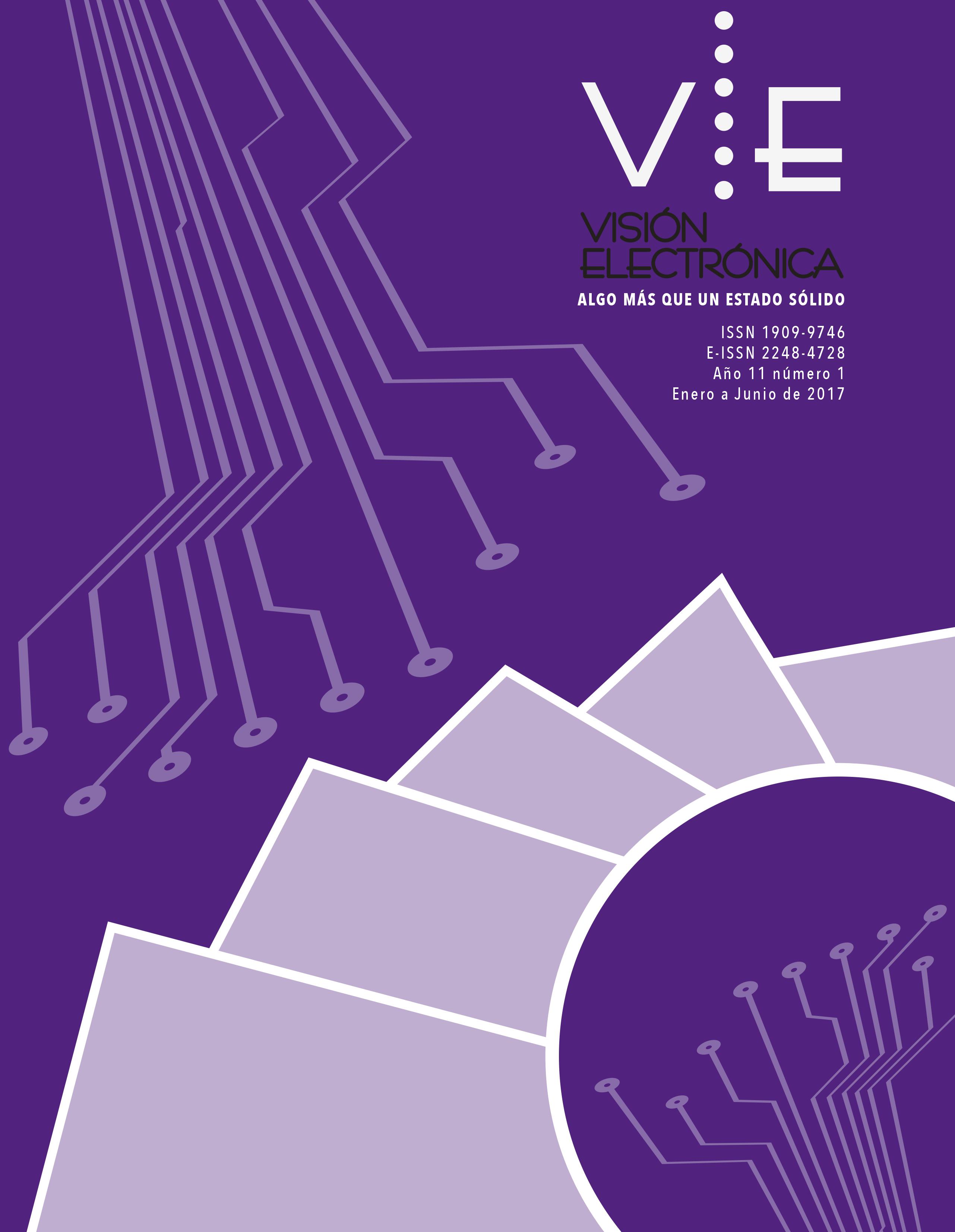DOI:
https://doi.org/10.14483/22484728.14618Publicado:
2017-12-31Número:
Vol. 11 Núm. 2 (2017)Sección:
Visión InvestigadoraEvaluation of hyperparameters in CNN for detecting patterns in images
Evaluación de hiperparámetros en CNN para detección de patrones de imágenes
Palabras clave:
Deep learning, image recognition, convolutional neural network, pattern recognition (en).Palabras clave:
Aprendizaje profundo, reconocimiento de imagen, red neuronal convolutional, reconocimiento de patrones (es).Descargas
Resumen (en)
Deep learning techniques have emerged as an effective solution to the problems of current pattern recognition techniques, such as neural networks. Within these new techniques, the convolutional neural networks (CNN) offer an integration to the recognition of patterns in images, given by the traditional set of images processing plus neuronal networks. This article presents the analysis of the different hyper parameters that imply the training of a CNN, which allows to validate the effects on the accuracy of the network. It is used as a base the recognition of electric energy meters, obtaining a network with an accuracy of 96.32 %.
Resumen (es)
Las técnicas de aprendizaje profundo han surgido como una solución eficaz a los problemas de las actuales técnicas de reconocimiento de patrones, como las redes neuronales. Dentro de estas nuevas técnicas, las redes neuronales convolucionales (CNN) ofrecen una integración al reconocimiento de patrones en imágenes, dados por el conjunto tradicional de procesamiento de imagen más redes neuronales. El presente artículo expone el an´alisis de los diferentes hiperparámetros que implican el entrenamiento de una CNN, que permite validar los efectos en la precisión de la red. Se emplea como imágenes de la base de pruebas, el reconocimiento de medidores de energía eléctrica, logrando obtener una red con una exactitud del 96,32 %.
Referencias
[2] J. Li, C. S. Wang, H. Wang and B. Zhang, “Classification of very high resolution SAR image based on convolutional neural network” International Workshop on Remote Sensing with Intelligent Processing (RSIP), Shanghai, 2017, pp. 1-4, https://doi.org/10.1109/RSIP.2017.7958811
[3] Z. Deng, L. Lei, H. Sun, H. Zou, S. Zhou and J. Zhao, “An enhanced deep convolutional neural network for densely packed objects detection in remote sensing images” International Workshop on Remote Sensing with Intelligent Processing (RSIP), Shanghai, 2017, pp. 1-4, https://doi.org/10.1109/RSIP.2017.7958800
[4] Z. Wang, Z. Li, B. Wang, H. Liu. “Robot grasp detection using multimodal deep convolutional neural networks”. Advances in Mechanical Engineering, vol 8, Issue 9: September 2016, https://doi.org/10.1177/1687814016668077
[5] j. Redmon and A. Angelova, “Real-time grasp detection using convolutional neural networks” IEEE International Conference on Robotics and Automation (ICRA), Seattle, WA, 2015, pp. 1316-1322, https://doi.org/10.1109/ICRA.2015.7139361
[6] M. Halicek, G. Lu, J. V. Little “Deep convolutional neural networks for classifying head and neck cancer using hyperspectral imaging”. J. Biomedic Opt, vol 22, no. 6, March 2017; https://doi.org/10.1117/12.2255562
[7] Z. Xiaolong, J. Beth, T. Chung “Self-Recalibrating Surface EMG Pattern Recognition for Neuroprosthesis Control Based on Convolutional Neural Network”. Frontiers in Neuroscience. Vol 11, 2017, p 379, https://doi.org/10.3389/fnins.2017.00379
[8] S. Vieira, W. Pinaya, A. Mechelli, “Using deep learning to investigate the neuroimaging correlates of psychiatric and neurological disorders: Methods and applications”, Neuroscience & Biobehavioral Reviews, vol 74, 2017, pp. 58-75, https://doi.org/10.1016/j.neubiorev.2017.01.002
[9] I. P. Marras and I. Patras, “Deep Refinement Convolutional Networks for Human Pose Estimation” 2017 12th IEEE International Conference on Automatic Face & Gesture Recognition, Washington, DC, 2017, pp. 446-453, https://doi.org/10.1109/FG.2017.148
[10] J. Gan, L. Lichen, Z. Yikui, L. Yinhua “Deep self-taught learning for facial beauty prediction”, Neurocomputing, vol 144, november 2014, pp. 295-303, https://doi.org/10.1016/j.neucom.2014.05.028
[11] I. Song, K. Hyun-Jun and P. B. Jeon. “Deep learning for real-time robust facial expression recognition on a smartphone” Consumer Electronics (ICCE), IEEE International Conference on, 2014.
[12] K. Dwivedi, K. Biswaranjan, A. Sethi, “Drowsy driver detection using representation learning” Advance Computing Conference (IACC), IEEE International, 2014, pp.995, 999, https://doi.org/10.1109/IAdCC.2014.6779459
[13] A. Krizhevsky, I. Sutskever, and G. E. Hinton, “Imagenet classification with deep convolutional neural networks”, In Advances in neural information processing systems, 2012, pp. 1097-1105.
[14] W. N. Hsu, Y. Zhang, A. Lee, and J. Glass, “Exploiting Depth and Highway Connections in Convolutional Recurrent Deep Neural Networks for Speech Recognition”, In Interspeech, 2016, pp. 395-399.
[15] M. D. Zeiler, and R. Fergus. “Visualizing and Understanding Convolutional Networks”. Springer : In Fleet D., Pajdla T., Schiele B., Tuytelaars T. (eds) Computer Vision – ECCV, 2014.


.png)




.jpg)





